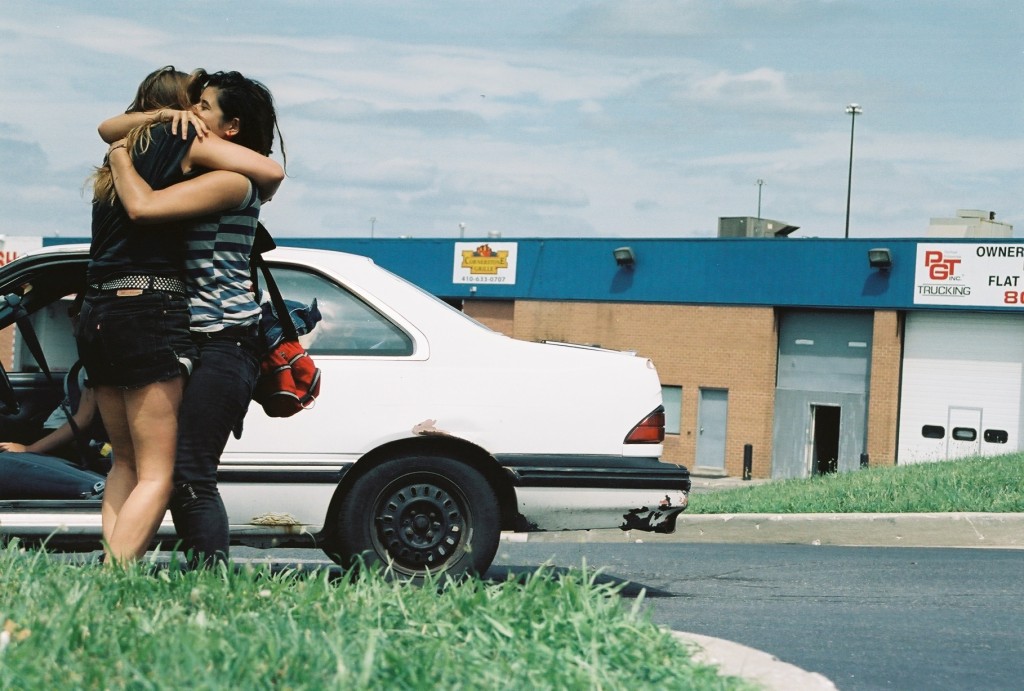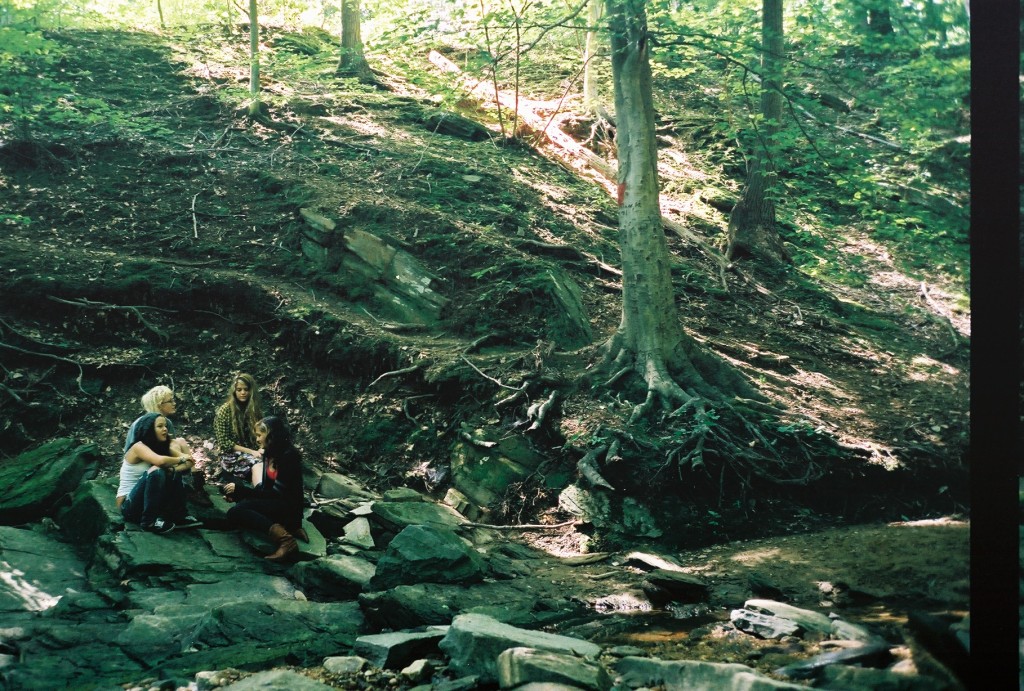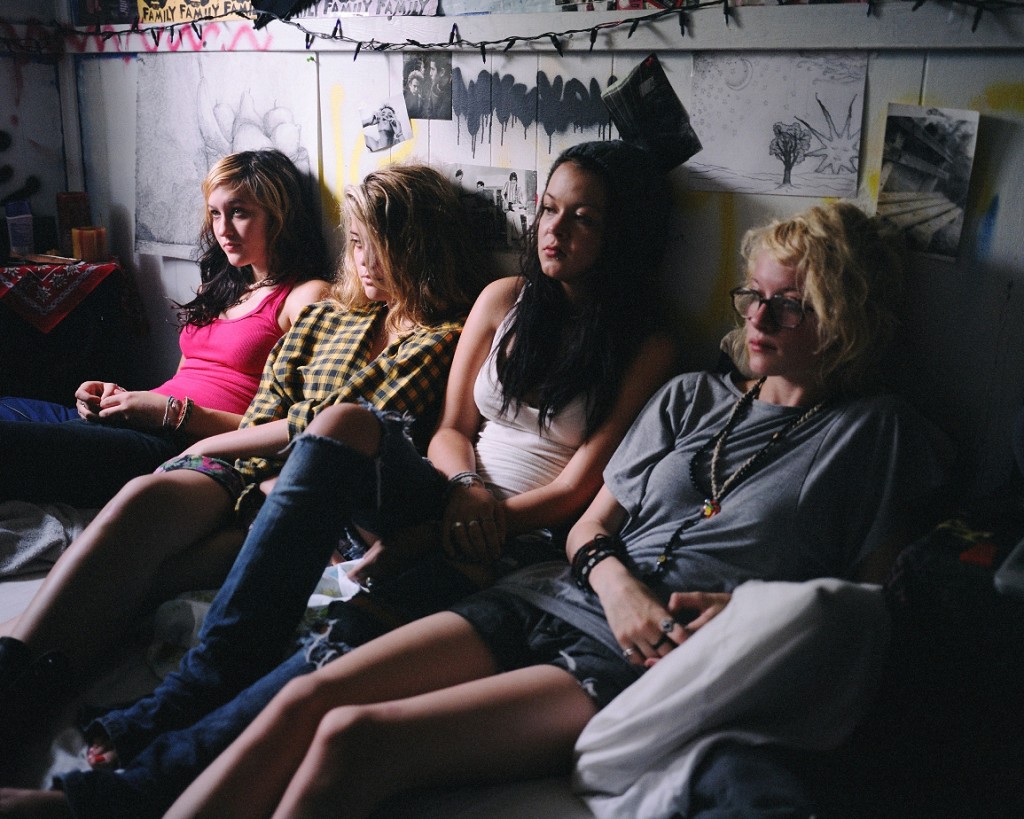Thu 17 Feb 2011
Hill Street Blues
Posted by Ethan under Film Review, NYC Film Critic
Comments Off on Hill Street Blues
Putty Hill
Written and Directed by Matt Porterfield
Starring Sky Ferreira, Zoe Vance, James Siebor Jr., Dustin Ray
**1/2
Matt Porterfield’s Putty Hill is an earnest attempt to do something different with the “kids aren’t all right†school of movies, which seek to depict the aimlessness and/or amorality of contemporary youth. It’s a genre that’s almost as old as Hollywood itself, growing out of such socially-conscious one-reelers as 1909’s A Drunkard’s Reformation and The Usurer’s Grip, which warned viewers against the evils of alcoholism and loan sharks respectively.
The perils facing America’s youth was never far from the thoughts of filmmakers (or moviegoers) either, fueling screeds like William Desmond Taylor’s The Soul of Youth, which decried the sorry state of the nation’s orphanages, and Cecil B. DeMille’s The Godless Girl, in which two kids are introduced to the dangers of atheism. (Both of these fascinating curiosities are available on the invaluable DVD set Treasures from the American Film Archives III: Social Issues in American Film.) Later examples of youth-in-peril pictures range from the camp classic Tell Your Children a.k.a. Dope Addict a.k.a. Reefer Madness—where one puff of marijuana is enough to turn pure-hearted teens into sex-crazed, violence-prone, jazz-listening punks—to Nicholas Ray’s seminal Rebel Without a Cause, which departs from tradition somewhat by encouraging the audience to side with the rebel instead of the squares.
Perhaps the movie that has had the most profound impact on the genre as it exists today is Kids, written by Harmony Korine and directed by photographer Larry Clark. At the time of its release in 1995, many impressionable people (myself included) bought into its presentation of a New York overrun by packs of wild teenagers roaming the city without any authority figures and sense of responsibility to themselves or each other. Time has since revealed the film to be hyperbolic and vaguely ridiculous, but aspects of it have endured in subsequent teen-centric productions (particularly those of the indie variety), from Korine’s frank language to Clark’s verite-shooting style to the restless and often predatory ennui that defines the characters’ lives. Putty Hill—which follows its cast of youthful faces around the titular lower-income Baltimore neighborhood, rather than the wilds of lower Manhattan—is thankfully far less sensationalistic than Kids, but it’s hard not to flash back to the latter film when Porterfield’s camera lingers on a group of teens aimlessly killing time at a nearby creek or a girl contemplates the sparsely-decorated room where a drug addict recently died of an overdose.
Actually, the two movies that I primarily found myself thinking of while watching Putty Hill were David Gordon Green’s George Washington and Andrea Arnold’s Fish Tank, both of which are also variations on the lost young souls genre. Those films occurred to me not because they’re so similar to this one—although they do have several things in common—but because they each possess essential elements that Putty Hill lacks. While I’m not the biggest fan of Green’s much-admired debut, a lyrical portrait of life in small-town North Carolina, it is a visually striking film that captures the sense of a very specific community that Porterfield is going for here. Meanwhile, Fish Tank—which landed on my 2010 Top Ten list—is an equally vivid depiction of a particular environment that also features a magnetic lead character in the form of Mia Williams, played by first-time actress Kate Jarvis.
Putty Hill, on the other hand, has neither particularly distinctive visuals nor a strong personality holding down the center of the frame. That’s by design to a certain extent. In the director’s statement included in the production notes, Porterfield describes how he deliberately started shooting the film (which came about after financing for another production fell through) with only a five-page treatment, one line of dialogue and 15 locations. In other words, he didn’t enter into this with a specific vision in mind, but rather discovered the movie as he went along. Putty Hill does have a loose narrative of sorts, one that revolves around the death of the aforementioned addict, whose passing brings his estranged family members back together for the funeral. There’s his younger brother (James Siebor Jr.), introduced to us in the middle of a paintball game; his cousin Jenny (Sky Ferreira), who fled the neighborhood several years ago and currently lives in Delaware; and her father (Charles Sauer) a tattoo artist that served a lengthy prison sentence for second-degree murder. Jenny is ostensibly the film’s main character (she’s the only one that gets a name at least) but she doesn’t dominate the proceedings, due to the way Porterfield has structured the movie and also because Ferreira lacks a strong screen presence. Instead, she’s one of the many faces that swims in and out of focus in Poterfield’s expansive depiction of this small neighborhood, which also includes plenty of bored teenagers and underemployed people just trying to get by.
The director’s visual approach is perhaps best described as utilitarian; he films the action with simple set-ups and compositions that seem designed not to call attention to themselves. It’s all well and good that Poterfield declines to show off for the sake of showing off, but he does need to fill the frame with something that holds our attention, be it a character or a distinctive quality of the location. (Just look at how Andrea Arnold frames the sky against the towering spires of Mia’s public housing estate in some shots of Fish Tank.) Too much of Putty Hill is flat and unremarkable—rather than giving us a specific sense of place, the film too often feels like it could be happening in any lower-income neighborhood. The movie’s most memorable scene is a lengthy shot of Jenny standing on her father’s back porch as night falls. That single image lingers because it reinforces something about the character—namely her isolation from her family—while also providing a more evocative look at the environment around her.
Putty Hill’s only significant stylistic quirk is Poterfield’s decision to interview the actors (the majority of whom are non-professionals) from off-camera, quizzing them about their lives and their relationship to the deceased. These unscripted conversations feel like gentle tweaks of the mockumentary format that’s so popular on TV right now in sitcoms like The Office and Modern Family. On those shows, the characters speak their thoughts directly into the camera, but the people filming them are rarely, if ever, acknowledged. Even though Poterfield never physically appears in the film, we’re always aware of his presence silently observing the action. This is his way, I suppose, of trying to get at the reality of these peoples’ lives while also reminding us of the inherent artifice of a fictional feature. It’s an intriguing device that might have been more successful had his impromptu interviews yielded more interesting answers. But the actors’ comments reveal only a modicum of insight into their characters’ personalities. In its low-key way, Putty Hill effectively shows how tragedy can unite young people that are otherwise disconnected from their community. Watching it though, I too often felt disconnected from the movie.
Putty Hill opens Friday at Cinema Village in New York and expands to Los Angeles on April 8.




No Responses to “ Hill Street Blues ”
Sorry, comments for this entry are closed at this time.